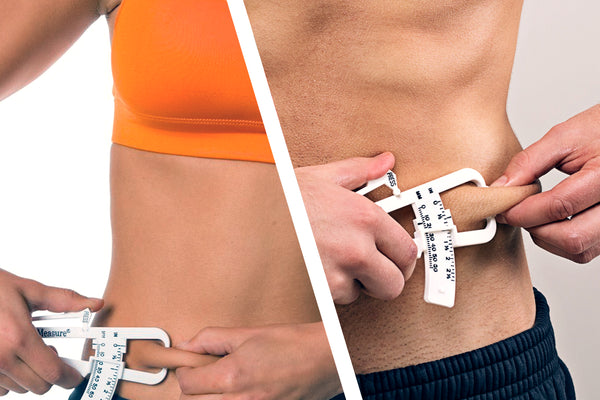When it comes to fitness and looking good, everyone can agree one on thing; body fat is a bother. Of course, it should be known that body fat does serve a purpose and one can have health issues if their body fat drops too low. But many people want to look good in a bathing suit, not just in their regular everyday clothes.
When a person weighs themselves, the scale only tells a part of the story. People so easily get caught up in the number shown on the scale, without figuring in how much of that number is muscle and how much is fat. Many would agree that the number does not matter that much as long as the fat is low which means the inches are low as well. When a person focuses on just the number of their weight, the path they take to get to a better feeling and better-looking person can be a not-so-pleasant one. Many times, people end up under eating and over exercising which is dangerous and has adverse side effects.
Once again, do not over emphasize the goal of looking good and under emphasize good health. If you are going about things the proper way, both can be accomplished (and should be).
There are numerous ways to test one’s body fat. Over the years more accurate and technological means have been developed, but with that you lose convenience and end up spending a little more as well. On the other side, with the convenience of such methods as calipers and even impedance testing, you may give way to accuracy.
So which way is best? Here are some of the most effective ways to test body fat percentage.
- Calipers
Very convenient, cost effective, and old school. Can be very accurate if the person doing the testing knows what they are doing. Certain methods are a 3 skin-fold test and 7 skin-fold test. It might feel a little uncomfortable being pinched in places that are not fun to get pinched, but for the money and time, maybe the most balanced method of getting tested still today.
- Impedance
Many scales today have a bioelectrical impedance feature built into them. This is when the scale sends little pulses up through the body to pick up water content and then shoots the info back down to you. Our muscles are primarily water, so this helps tell the scale what is muscle and what is not. The problem is that if you are not properly hydrated, the scale will read a higher body fat percentage. Once again, very convenient, however, can be very inaccurate.
- HydroStatic Weighing
This is not that convenient at all, but shows promise with accuracy, especially when looking at body composition. The subject is weighed normally and then submerged into a tank of water and weighed again. The two number are then compared which allows the person testing to get a great idea of overall body composition (fat to muscle ratio). Once again, getting to a place that offers this may be a challenge.
- 3D Body Scan
This method provides both accuracy and convenience but is not all that cost effective. Available are at-home devices that do full body scans and provide circumference measurements of different areas of the body, tracking weight and body fat percentage via corresponding apps on mobile devices. The convenience factor is awesome and per reports the accuracy is too, however, you will be spending a easy $1000 for the at-home devices.






